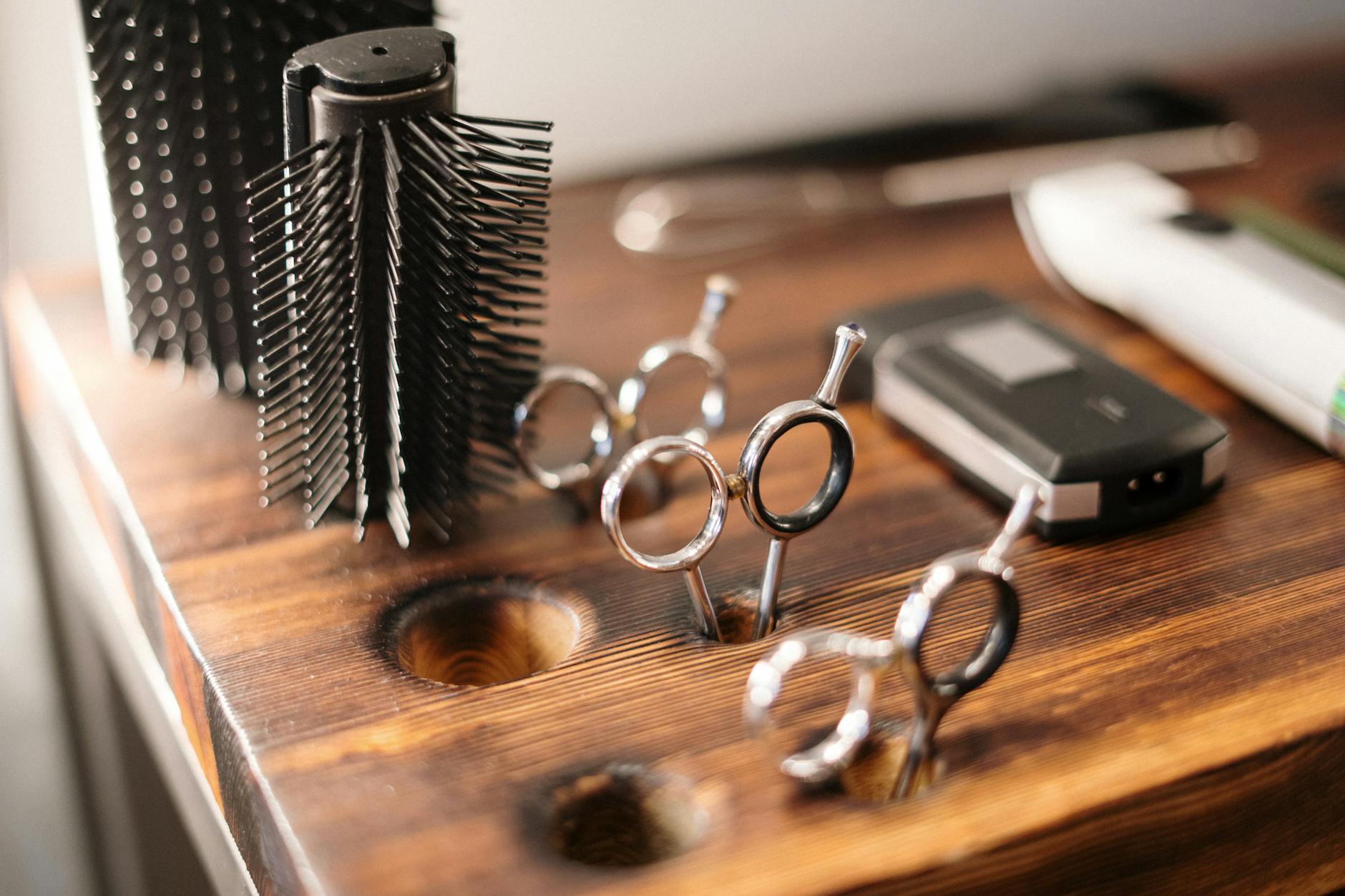Unlock the secrets to a flawless fade with our expert barber’s guide – discover insider tips for that perfect haircut!

Image courtesy of cottonbro studio via Pexels
Table of Contents
Welcome to our blog, where we will delve into the art of barbering and share valuable tips and tricks to help you master the art of the perfect fade haircut. The fade has become increasingly popular among men, and it is essential for barbers to have the skills and knowledge to deliver flawless results.
Hair Types and Face Shapes
Understanding different hair types and face shapes is the foundation for achieving exceptional fades. Each hair type requires specific techniques and attention to detail. For example:
– Straight hair: Straight hair tends to be soft and easy to work with, making it ideal for creating sharp lines and precise fades.
– Curly hair: Curly hair requires extra care due to its texture. It is crucial to take into consideration the curl pattern and adjust the fade accordingly to create balance and symmetry.
– Wavy hair: Wavy hair offers versatility when it comes to fades. Barbers can play with different lengths to enhance the natural texture and create unique styles.
It is also important to consider face shapes when determining the best fade for each client. For instance:
– Oval face: An oval face is considered the most versatile, as most hairstyles look great on this face shape. Barbers can experiment with various fade styles, from skin fades to high fades.
– Round face: To create the illusion of a more elongated face shape, a high or mid fade can work wonders for someone with a round face. It adds height and definition to the head.
– Square face: A low fade that leaves a bit more length on the sides can soften the angles of a square face, providing a more balanced look.
The Art of Blending
A seamless blend is the cornerstone of a perfect fade haircut. Achieving a smooth transition between different clipper guard lengths requires skill and practice. Here are some essential tips:
– Start with the longest guard: Begin the fade by using the longest clipper guard desired for the specific fade style. This will create the base length for blending.
– Work with different guard lengths: Progressively work your way down the sides and back of the head using shorter guard sizes. Start with a higher guard, and with each pass, gradually decrease the length to create a gradual fade.
– Utilize clipper-over-comb technique: The clipper-over-comb technique allows for more control and precision when blending. Comb the hair at an angle and use the clipper to remove the desired amount of hair, ensuring a smooth transition.
– Blend with shear-over-comb technique: To achieve a natural and seamless blend, use the shear-over-comb technique. Comb the hair and hold the comb at a slight angle while using scissors to remove any excess length.
Tools and Equipment
The tools and equipment you use can greatly impact the quality of your fades. Investing in high-quality barbering tools will not only enhance your work but also provide a better experience for your clients. Here are some essential tools:

Image courtesy of www.amazon.com · In stock via Google Images
– Clippers: Invest in a good set of clippers with various guard sizes to achieve different fade lengths effortlessly.
– Trimmers: Trimmers are perfect for precision work, such as creating crisp lines and shaping facial hair.
– Shears: Quality shears are essential for blending and removing bulk without compromising the integrity of the hair.
– Comb and brushes: A wide-tooth comb and various brushes are vital for sectioning, detangling, and styling hair during the fade process.
– Barber cape and towels: Ensure your clients are comfortable and protected with a barber cape and clean towels to catch any stray hairs and prevent irritation.
Book Now For a Free Consultation
The Finishing Touches
The finishing touches can elevate a fade haircut and leave a lasting impression on your clients. Remember to:
– Pay attention to detail: Use a mirror and comb to carefully inspect and fine-tune the fade. Pay attention to any uneven lines or strays and correct them before completing the service.
– Style with finesse: Finish the fade with a styling product that suits the client’s hair type and desired look. Help them achieve their desired style and educate them on how to maintain it at home.
– Provide aftercare advice: Share tips with your clients on how to maintain their fade between appointments. Recommend suitable products and advise on proper hair care routines to extend the durability of the fade.
In conclusion, mastering the art of the perfect fade requires an understanding of hair types, face shapes, blending techniques, and the right tools. With practice, patience, and attention to detail, you can become an expert barber capable of delivering flawless fades that leave your clients looking and feeling their best. Stay tuned for more barbering tips and tricks in our future blog posts!